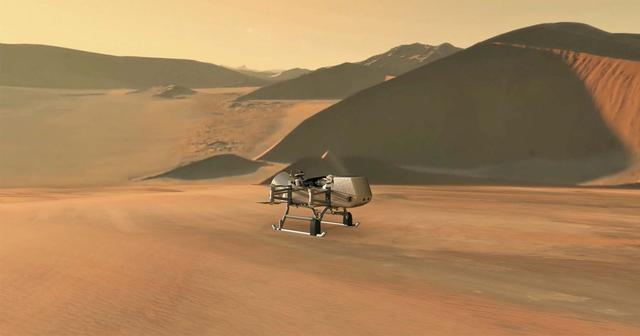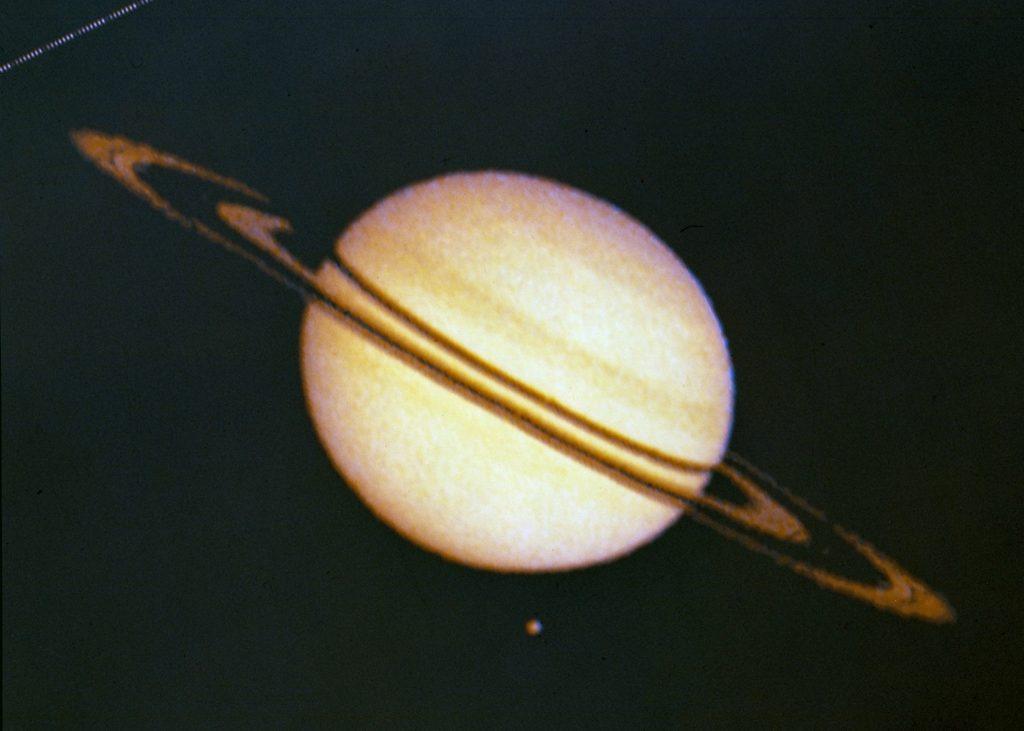With many institutions interested in racing towards Mars and building colonies on it, NASA has given the opportunity for a new exploration mission of its kind towards a space object that many do not think of as a future Earth colony; It is the largest moon in the solar system after Jupiter's moon Ganymede, and the largest moon of Saturn; We are talking about the moon Titan. But before raising doubts about why NASA is involved in Thanos' home in the Marvel universe, let me tell you why NASA chose to explore Titan.
Moon Titan and the chance of a future life
What makes Titan so interesting is its atmosphere, which is made up of 95% nitrogen and 5% methane, when this formula is exposed to sunlight it forms organic compounds, and we all know organic compounds = future life! That's why Titan became an ideal candidate for hosting life on its surface.
Another, and more interesting, reason is the belief that there is an ocean of hypersaline water beneath Titan's surface, which makes it an excellent candidate for study as part of the NASA Ocean Worlds mission to study the various space objects that have or have hosted any type of water in the past.
Titan was also selected for the NASA New Frontiers Program, whose primary goal is to send new-of-its-kind space missions to study objects within our solar system that are instrumental in our understanding of the planets. The Dragonfly mission became the fourth mission in the program, after the Juno mission that studies Jupiter, the OSIRIS-REx mission launched to study the potentially dangerous asteroid Bennu, and the New Horizons mission that explored Pluto and the Ultima Tola particle in the asteroid belt.
The role of previous spacecraft in the mission
Space missions are interconnected and complement each other very elegantly, as the Dragonfly mission will use information collected by all spacecraft that have transited or visited Titan before.


The first spacecraft to photograph Titan was Pioneer 11, while making its first transit to Saturn in 1979. Pioneer 11 also showed that the average temperature of the moon is minus 193 degrees Celsius.
The second transit of Titan was in 1980 by the Voyager 1 spacecraft, which confirmed that the moon's atmosphere is composed mostly of nitrogen, and the spacecraft also noted some seasonal changes at the moon's poles. Before Voyager 1 transited Titan, it was thought to be the largest moon in the solar system; The spacecraft even provided the correct measurements of the moon's diameter, which turned out to be smaller than Jupiter's moon Ganymede.
Not all credit goes to Titan's spacecraft photos; For the first time, the Hubble telescope was able to penetrate the atmosphere of Titan and photograph its surface by using infrared radiation.
It wasn't until 2005 that the European Space Agency's Huygens probe separated from NASA's Cassini spacecraft to touch the surface of Titan for the first time and made a series of measurements that provided us with the chemical information and statistics we know about the moon today, and the Cassini spacecraft completed 127 transits of the moon Titan, in which it was photographed. Many pictures of Titan and its atmosphere. The information provided by the Huygens probe on the surface topology will be used to determine where the Dragonfly will land next.
Dragonfly mission
The Dragonfly mission was chosen by NASA as the next medium-class planetary science mission, as the Dragonfly mission competed with the proposed CAESAR mission, which aimed to go to and extract a sample from Comet "Churyumov Grazimenko" and return it to Earth.
The Dragonfly is a drone, making it the first drone to be used outside of the planet! What distinguishes it is its design that allows it to land on the surface or fly, which gives it the advantage to explore many scattered areas on the surface of the moon in a short time.
The vehicle was designed by three engineers from Penn State University. These engineers worked on designing the vehicle to operate in Titan's low temperatures, and they also ensured its safety during the continuous movement (leapfrog) between landing and flight; Where the vehicle is scheduled to land in an initial place to study it and then fly to move to another place repeatedly.
Normally, the spacecraft's charging power isn't much of an obstacle, because we use the sun's rays to charge the solar panels on board, which in turn provide it with energy, but the Dragonfly on Titan's surface doesn't have the luxury of getting sunlight since the moon's atmosphere is thick and doesn't allow penetrating rays. That is why it was necessary to think of another way to power the craft, and here comes the role of long-range nuclear batteries that were used on long-range spacecraft such as Voyager 1, New Horizons, and others. These batteries work by converting the heat generated by nuclear fission into energy, so they consist of two basic parts: a radiating element that provides heat, and a transducer that converts heat into electricity.
Dragonfly Mission Objectives
The Dragonfly mission is scheduled to be launched in 2026, to reach Titan in 2034, and spend nearly three years on it in which studies and experiments are conducted, including what is on the surface of the moon, and what is in the atmosphere through flight. On the surface of the moon, the Dragonfly spacecraft will study the types of organic compounds that can be on Titan's surface using a mass spectrometer.
While in flight, the dragonfly will better understand the chemical processes that formed Titan's atmosphere and compare them to those that formed Earth's atmosphere through its meteorological sensors, as well as its aerial photography of surface geology on Titan.
If all goes well, it will be fifteen years since the Dragonfly landed on Titan and began to explore its depths, then I think this event will excite both space and Marvel fans alike.
Last update: 9/22/2019